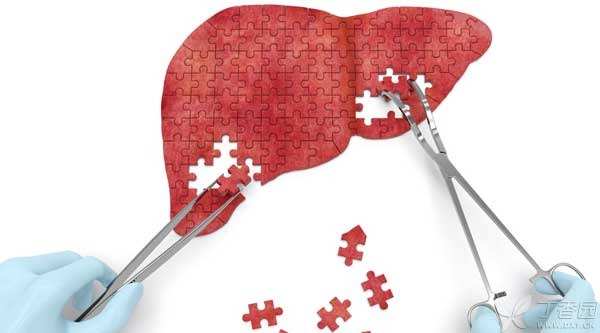
China is a big country with hepatitis B, and chronic hepatitis is still difficult to cure and there is a risk of progression to liver cirrhosis and liver cancer. Therefore, the public turns pale at the mention of [hepatitis] and often discriminates against hepatitis patients and hepatitis virus carriers.
Fear and discrimination arise because the public knows too little or has a wrong understanding of hepatitis.
This article will summarize the common misunderstanding of the public on the infectivity of hepatitis, hoping to make everyone truly understand and understand hepatitis.
Myth 1: All hepatitis is contagious
Among the common causes of hepatitis, besides viral hepatitis, there are also many non-infectious hepatitis, such as
- Alcoholic hepatitis: caused by long-term heavy drinking; Simple fatty liver: due to excessive deposition of fat in hepatocytes; Drug-induced liver injury: the main cause is irrational drug use; Autoimmune liver disease: Like lupus erythematosus and rheumatoid arthritis, it belongs to the category of connective tissue disease.
These liver diseases are not infectious.
In addition, because all kinds of hepatitis often lead to abnormal liver function (the increase of transaminase and/or bilirubin is the most common), the public often feel that [abnormal liver function] or [jaundice] is infectious in itself. In fact, these symptoms are only the result of hepatitis and are not infectious.
Myth 2: Hepatitis Patients Need [Quarantine]
Among the common viral hepatitis, hepatitis a and hepatitis E are digestive tract infectious diseases, which require isolation methods such as meal separation and fecal disinfection.
Hepatitis a virus is excreted out of the body with patients’ feces and can cause sporadic epidemic or pandemic by polluting water sources, food, tableware, etc.
In 1988, Shanghai residents ate clams contaminated by hepatitis a virus, causing the largest epidemic of hepatitis a since the founding of the People’s Republic of China, with 310,000 cases occurring in four months.
Contamination of food during production is also the cause of the spread of hepatitis a. For example, sandwiches, orange juice, salads and finished meat products are contaminated by hepatitis a virus, which is the main cause of hepatitis a epidemic in developed countries.
Hepatitis E has also seen pandemics caused by water pollution, but at present, sporadic cases caused by food pollution are more common.
To prevent these two kinds of hepatitis transmitted by digestive tract, attention should be paid to:
Wash hands frequently
Children living collectively in kindergartens and schools are high-risk groups for the transmission of hepatitis a, and they should develop a good hygiene habit of washing their hands after defecation through education.
Pay attention to dining hygiene
For some foods that are easy to carry pathogenic bacteria, such as snails, shells, crabs, etc., they must be cooked and steamed thoroughly to prevent bad eating habits such as eating raw, half-eaten and eating directly after pickling. Attention should be paid to food hygiene to prevent diseases from entering from the mouth.

Myth 3: Daily Contact Can Infect Hepatitis B and Hepatitis C
Daily contact does not spread hepatitis B or hepatitis C.
Shaking hands, hugging, sharing office supplies, sharing a dormitory, dining in the same restaurant and sharing toilets are not exposed to blood, and generally do not infect hepatitis B or hepatitis C. Epidemiological and experimental studies have not found that these two kinds of hepatitis can be transmitted by blood-sucking insects (mosquitoes, bedbugs, etc.).
These two kinds of hepatitis are mainly transmitted through blood, mother-to-child vertical transmission and sexual contact.
Due to strict hepatitis B and hepatitis C virus screening for blood donors, Hepatitis B and hepatitis C infection caused by blood transfusion or blood products has rarely occurred. Transmission through damaged skin and mucous membrane, It is mainly due to the use of medical devices that have not been strictly disinfected, invasive diagnosis and treatment operations and operations, unsafe injections, especially drug injections, etc. Other diseases such as pedicure, tattoos, ear piercing, sharing razors and toothbrushes, and accidental exposure of medical personnel at work can also be spread.
Mother-to-child transmission of hepatitis B mainly occurs in perinatal period, mostly in contact with mother’s blood and body fluid transmission during childbirth. With the application of hepatitis B vaccine combined with hepatitis B immunoglobulin, mother-to-child transmission has been greatly reduced. Mother infected with hepatitis C can also infect newborns during childbirth, and it is suggested that women suffering from hepatitis C should give birth after being cured.
Unprotected sexual contact with hepatitis B or hepatitis C virus carriers may lead to infection. If accompanied by other sexually transmitted diseases, especially AIDS, the risk of infection is higher.

Myth 4: Getting hepatitis B will definitely develop into chronic
After 6 months of infection with hepatitis B virus, it has not been removed, which is called chronic hepatitis B infection.
Age at the time of infection is the most important factor affecting chronic infection. In perinatal infection, the risk of chronic infection is as high as 90%, while the chronic infection rate in infant period (0-5 years old) drops to 50%, while only 5%-10% of adults infected develop chronic infection.
Therefore, do a good job in blocking mother-to-child transmission of hepatitis B virus, Do a good job in hepatitis B vaccination for infants, Chronic hepatitis B can be controlled. Since 2000, China has included hepatitis B vaccine into the free planned immunization program, the infection rate of infants has dropped significantly. The national epidemiological survey of hepatitis B in 2006 shows that the incidence rate of chronic hepatitis B among children under 5 years old in China is only 1%, which has reached the level of European and American countries.
Myth 5: Hepatitis B is passed on from mother to child,
Hepatitis B has the phenomenon of family aggregation, which is often manifested as the simultaneous existence of hepatitis B virus infection between mothers and children or brothers and sisters. Therefore, many hepatitis B patients mistakenly think that this is a hereditary disease and even dare not marry and have children.
Hereditary diseases refer to diseases caused by changes in genetic material. Infectious diseases are diseases caused by an originally healthy individual infected by infectious pathogens. Obviously, hepatitis B is not caused by errors in the patient’s genetic material, but by infection with hepatitis B virus.
Newborns in the process of labor will contact a large number of maternal blood, which is the cause of mother-to-child transmission of hepatitis B. In addition, when pregnant, the blood vessels on the mother’s uterine surface are damaged, such as placenta peeling off, and maternal blood leakage to fetal blood circulation may also cause intrauterine infection.
Thus, no matter what kind of reason mother-to-child transmission is actually the mother through the internal route of hepatitis B virus transmission to the next generation. Therefore, hepatitis B is an infectious disease rather than a genetic disease, which can be blocked by injecting hepatitis B vaccine and hepatitis B immunoglobulin.
Hepatitis is not terrible, what is terrible is ignorance and fear of diseases. As long as we take effective protective measures, the spread of hepatitis can be effectively controlled.
Responsible Editor: Ni Jiahua
This article is exclusively authorized to be used by Clove Garden and refuses any other form of reprinting.
Source: shutterstock.com
